PROTECT YOUR DNA WITH QUANTUM TECHNOLOGY
Orgo-Life the new way to the future Advertising by AdpathwayWhen you’re thinking about growing snackable baby carrots, there’s something that might surprise you: those uniformly shaped “baby carrots” in plastic bags at the grocery store aren’t baby carrots at all. They’re mature carrots cut and tumbled into that distinctive shape.
Real baby carrots (the ones you can grow in your garden) are infinitely better. They’re sweeter, more tender, and come in shapes and colors you’ll never find in a store.
Growing baby carrots is ideal for areas where full-sized carrots might not work, or if you’re just impatient. You can succession plant in smaller spaces, harvest earlier in the season, and enjoy carrots at peak sweetness. Young carrots have a delicate flavor and crisp texture that changes as they mature, making them perfect for eating fresh or barely cooked.
But knowing exactly when to harvest is tough (as it often can be with carrots). Pull them too early and you’ll have wisps of carrot that aren’t worth the effort. Wait too long and you’ve just got regular carrots. Still good, but missing that special baby carrot appeal. Let’s take a look at when and how to harvest your baby carrots at their best.

Little Finger Carrot Seeds

Scarlet Nantes Carrot Seeds
Red Cored Chantenay Carrot

Red Cored Chantenay Carrot Seeds
What Are Baby Carrots?
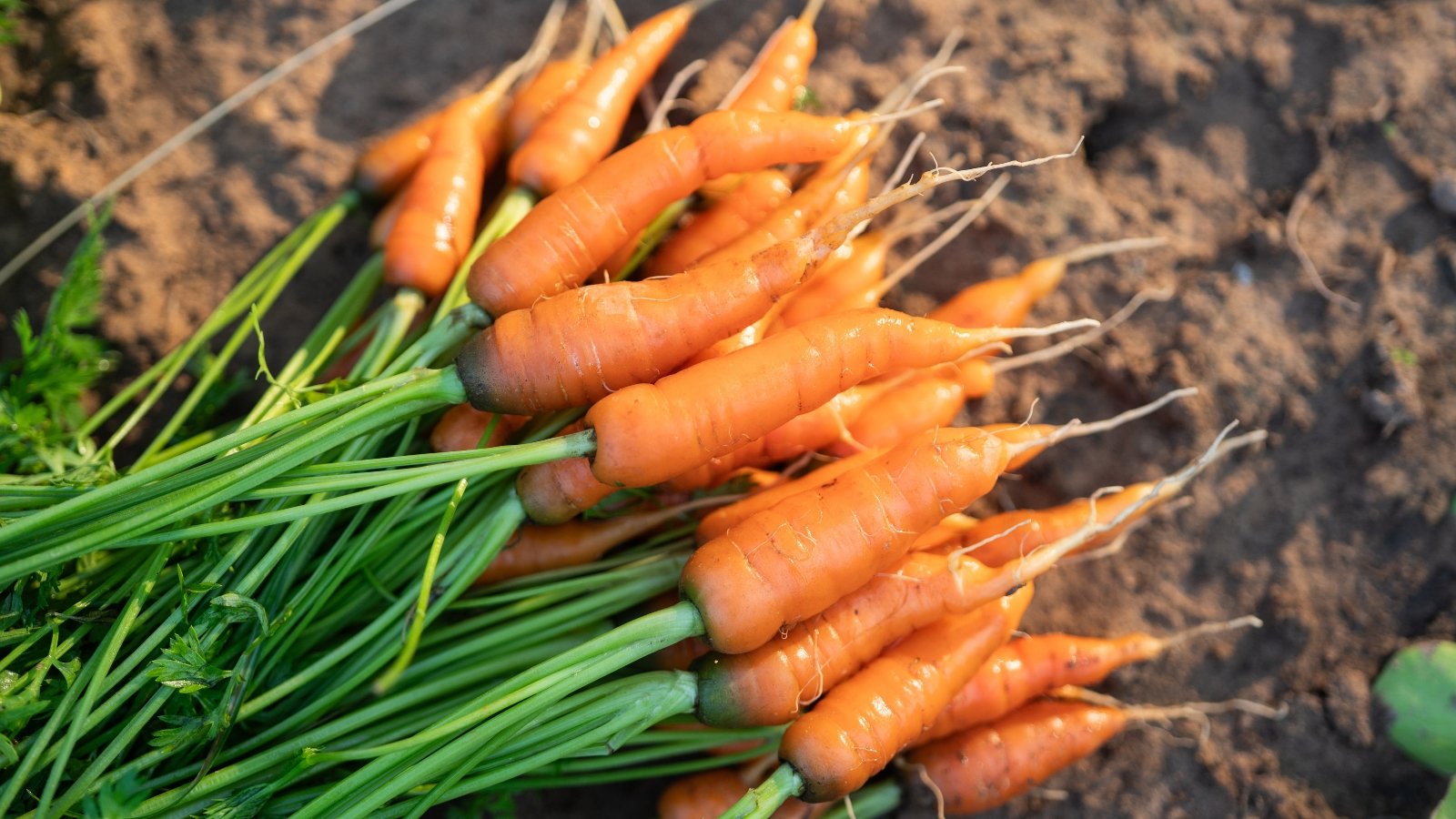 It’s a quick grower that delivers charm in every crunch.
It’s a quick grower that delivers charm in every crunch.Before we get into harvesting, let’s clear up what baby carrots are. You’ve got two options here, and each requires slightly different timing.
First, there are true baby varieties bred to be harvested small, like ‘Little Finger.’ These varieties are naturally small at maturity, developing their full sweetness in miniature form.
Then there’s the more common approach of harvesting regular carrot varieties young. Any carrot can be harvested as a baby carrot if you time it right. ‘Scarlet Nantes’ works particularly well for this, as does ‘Red Cored Chantenay.’
The advantage of true baby varieties is predictability. With regular varieties harvested young, you have more flexibility but need to pay closer attention to development. Both approaches work wonderfully, but which you choose will depend on your preference and growing space.
When to Harvest Baby Carrots
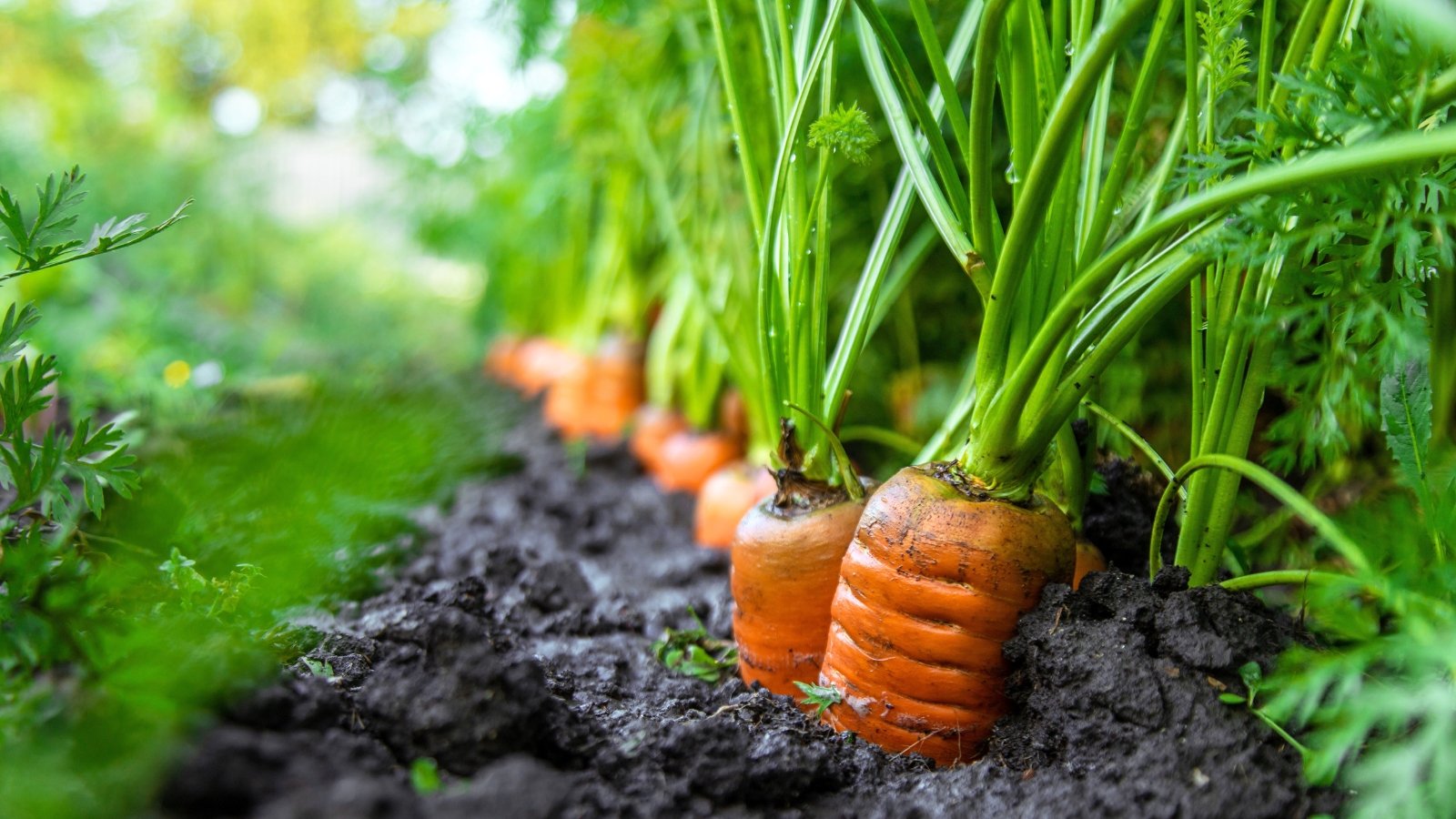 When green tops thrive and shoulders peek, it’s go-time.
When green tops thrive and shoulders peek, it’s go-time.The secret to perfect baby carrots is simple: read the information on the seed packets to determine your timing. For baby carrots, you’ll harvest much earlier than that number. Most varieties are ready as baby carrots at about 50-70% of their mature timing.
For example, if you’re growing a variety that matures in 70 days, start checking for baby carrots around day 45-50. True baby varieties are usually ready in 50-60 days from sowing, depending on growing conditions and weather.
Visual cues matter more than counting days. Look for the shoulders (tops) of carrots just beginning to emerge from the soil. When you can see crowns about half an inch in diameter peeking through, they’re probably ready. The foliage should be deep green and healthy, too.
The Finger Test
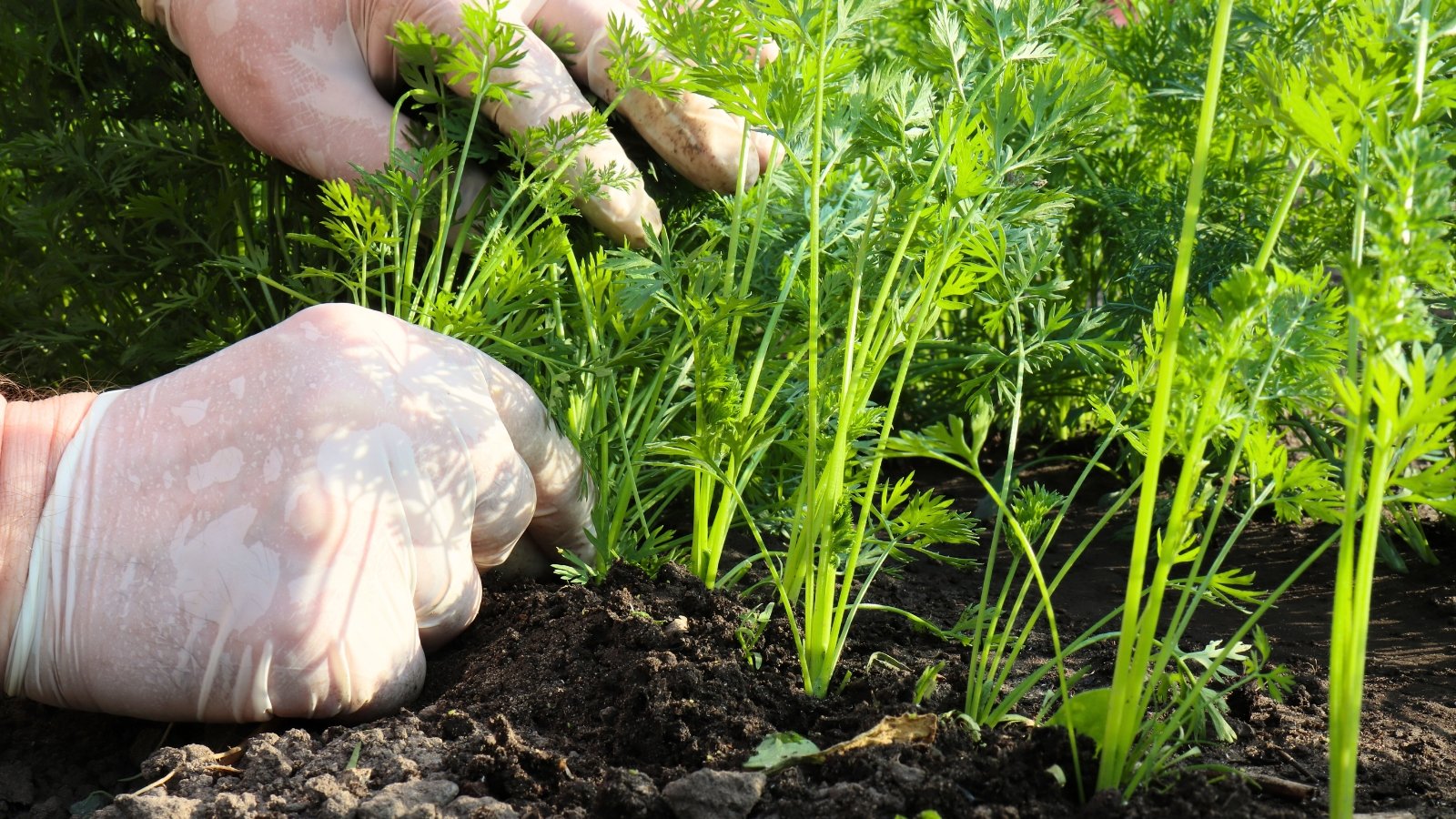 Check the edges first—those tend to grow up quicker.
Check the edges first—those tend to grow up quicker.Since you can’t see most of the carrot underground, you need a reliable way to check size without harvesting your entire crop. This is where the finger test comes in.
Gently brush away soil from around the top of a test carrot. Use your finger to feel the diameter. Baby carrots should be about finger-width or slightly smaller, typically up to three-quarters of an inch across. The shoulder should feel firm and well-formed, not underdeveloped.
Choose test carrots from different parts of your row, as growth can vary even within the same bed or container. Carrots on the edges often develop faster than those in the center. Once you find the right size, you can harvest selectively or clear entire sections.
Don’t worry if you accidentally pull a carrot that’s not ready during testing. Even tiny carrots are edible and surprisingly sweet.
How to Harvest Baby Carrots
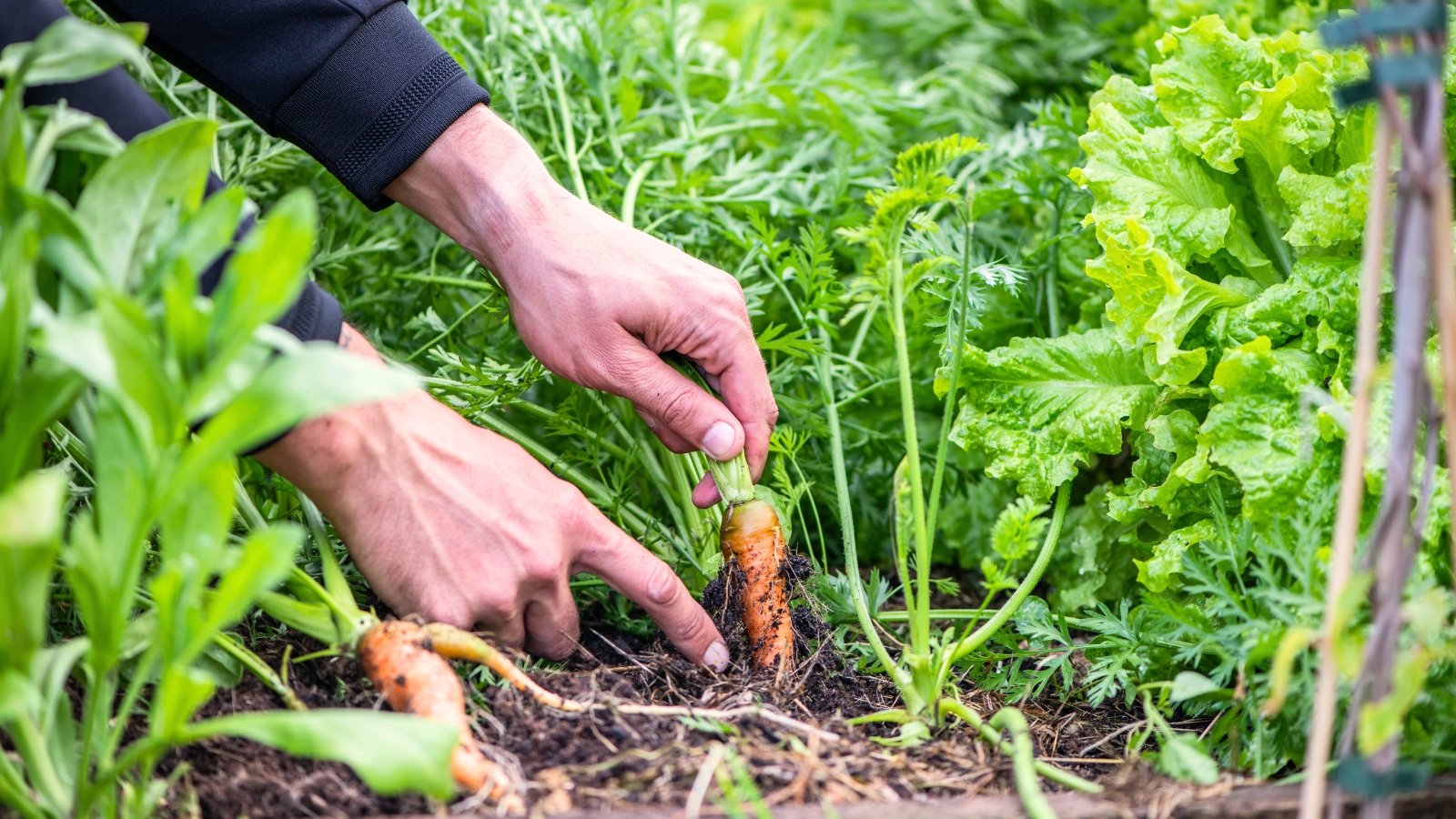 Damp soil helps them slide free without a fight.
Damp soil helps them slide free without a fight.The actual harvest is where many gardeners run into trouble. Baby carrots are more delicate than mature ones, with thinner skin that damages easily. Gentle handling and the right soil conditions are essential to success.
Water your carrot bed thoroughly the day before harvesting. This softens the soil and makes pulling much easier. Rock-hard dry soil will cause baby carrots to snap, while muddy conditions make harvesting messy and can promote rot if you’re storing them.
Grasp all the foliage together right at the base where it meets the carrot. Pull straight up with steady, even pressure. Don’t yank or twist. If a carrot resists, use a hand fork to loosen the soil alongside it first. Aim for a smooth extraction that doesn’t disturb neighboring carrots you’re leaving to grow.
In heavy or compacted soil, forget pulling altogether. Use a garden fork or trowel to carefully dig alongside the row. Then you can lift them out easily without damage. This method takes longer but saves more carrots.
Succession Harvesting
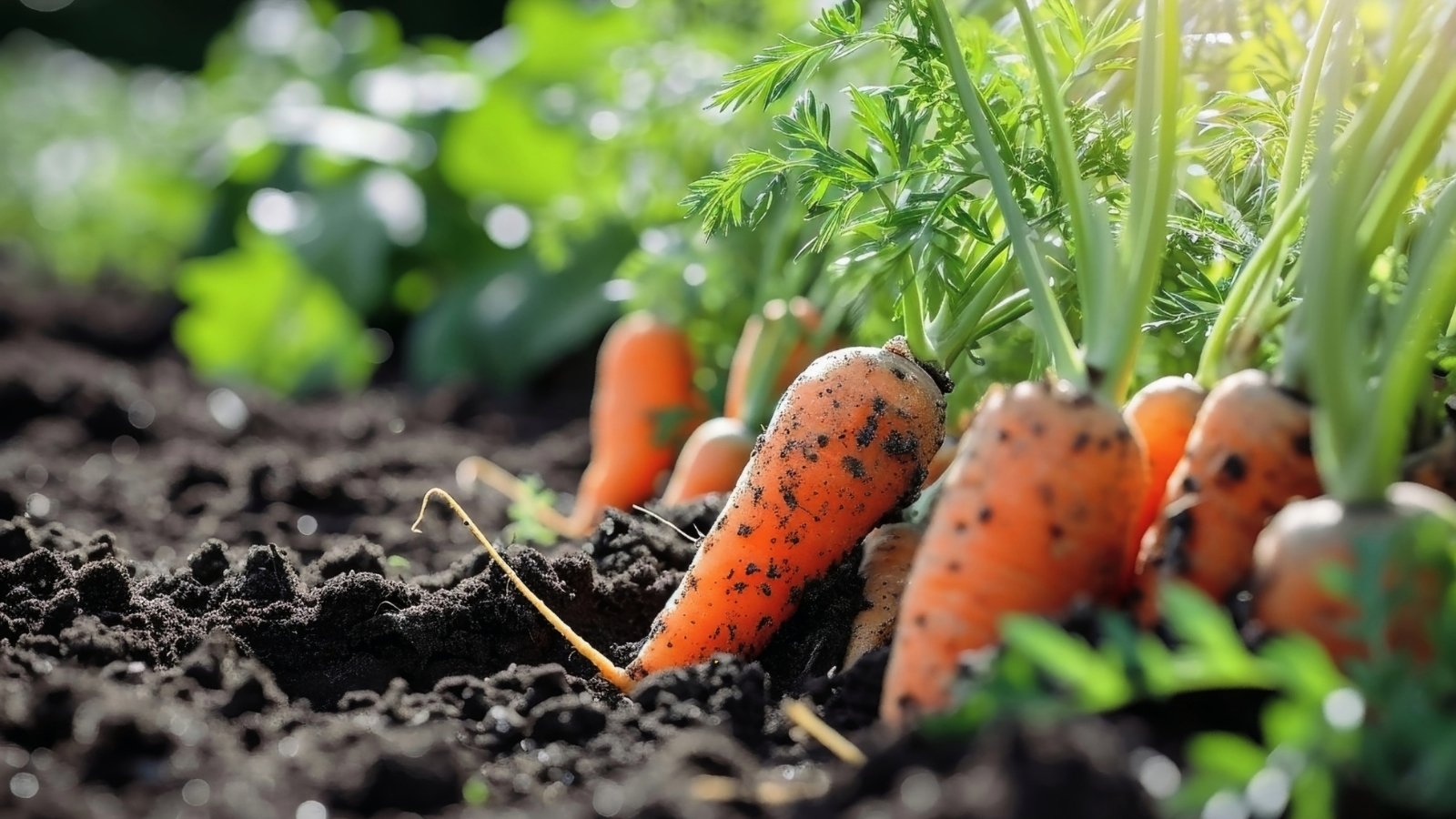 Gentle thinning turns into steady snacks all season long.
Gentle thinning turns into steady snacks all season long.When you harvest baby carrots, you don’t have to harvest everything at once. Selective harvesting lets you enjoy baby carrots over several weeks while allowing some to reach full size.
Start by harvesting every other carrot or every third carrot in your rows. This gives the remaining carrots more space to develop while providing you with an early harvest. As you harvest, remaining carrots will quickly fill the space. What were too-small carrots one week can become perfect baby carrots the next.
After Harvesting
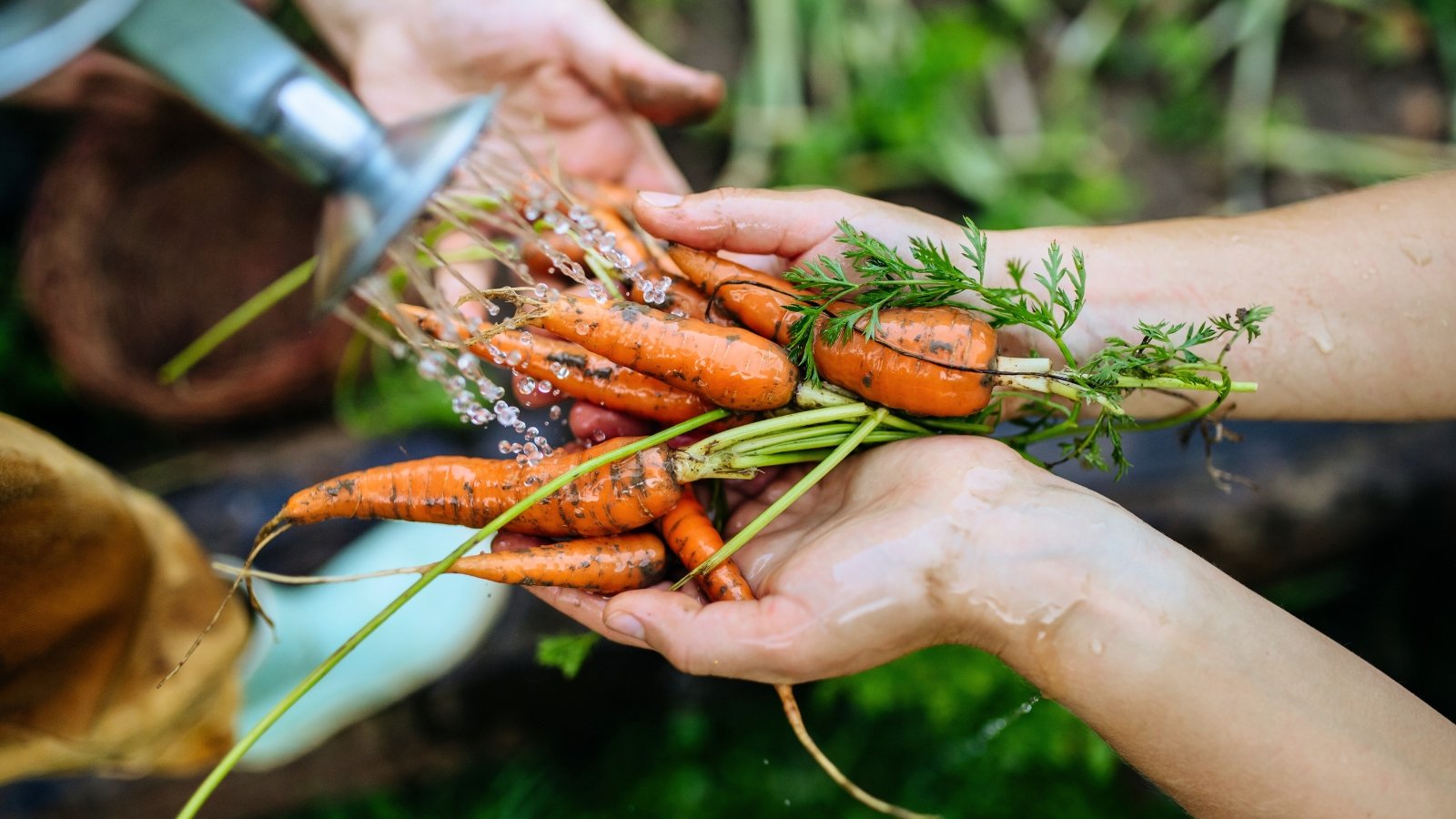 Gentle washing keeps freshness without damaging delicate roots.
Gentle washing keeps freshness without damaging delicate roots.How you handle baby carrots immediately after harvest determines their storage life and eating quality. These tender roots need gentler treatment than their mature counterparts.
Remove tops immediately after harvesting, leaving about half an inch of stems. Leaves continue drawing moisture from the roots, causing carrots to go limp quickly. Save young carrot greens for pesto if you like, as they’re perfectly edible when young and tender.
Rinse baby carrots gently in cool water, using your hands to remove soil rather than scrubbing. Their thin skins damage easily, and damaged spots become entry points for decay. Pat dry or air dry before storage if you’re not eating them immediately.
For storage, place baby carrots in perforated plastic bags or containers lined with lightly damp paper towels. They’ll keep for 2-3 weeks, but they’re absolutely best within the first week.
Harvesting Baby Carrots in Containers
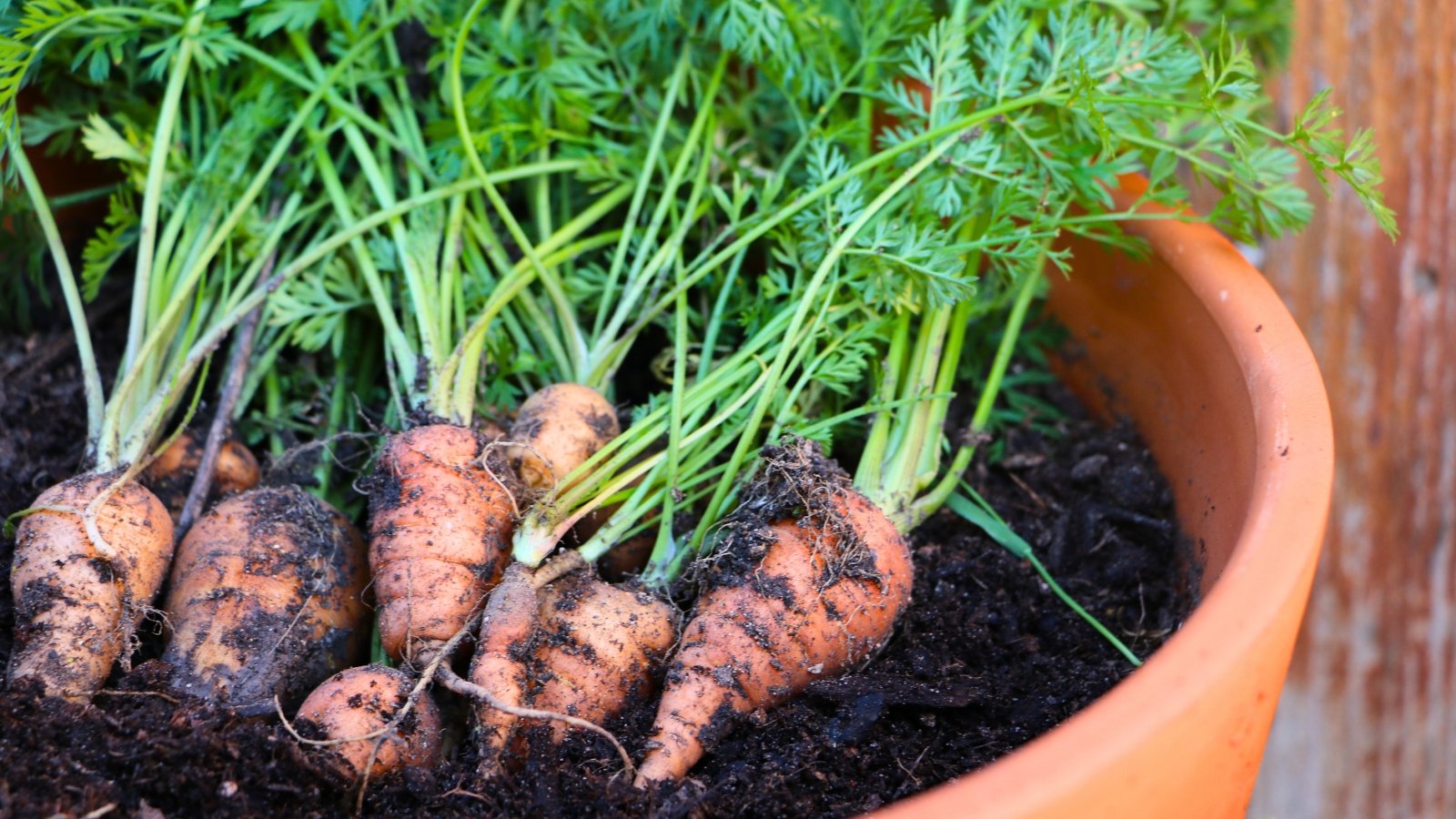 Containers need gentle digging to keep neighbors happy.
Containers need gentle digging to keep neighbors happy.Baby carrots are perfect for container growing, but harvesting from pots requires a slightly different technique. The confined space means you need to be even more careful not to disturb neighboring plants.
Once most carrots reach baby size, carefully dig around the edge of the container with a trowel. Then simply tip the entire container onto a tarp or wheelbarrow. This lets you harvest everything at once without damage.
In small raised beds or square-foot gardens, use scissors to harvest carrot greens first if they’re crowded. This gives you better access to the roots and prevents accidentally pulling multiple carrots at once.
Window boxes and shallow containers are ideal for round baby carrot varieties like ‘Tonda di Parigi’. These can be popped out easily once ready, and their shallow root system means less soil disturbance during harvest.


 1 month ago
28
1 month ago
28





















 English (US) ·
English (US) ·  French (CA) ·
French (CA) ·